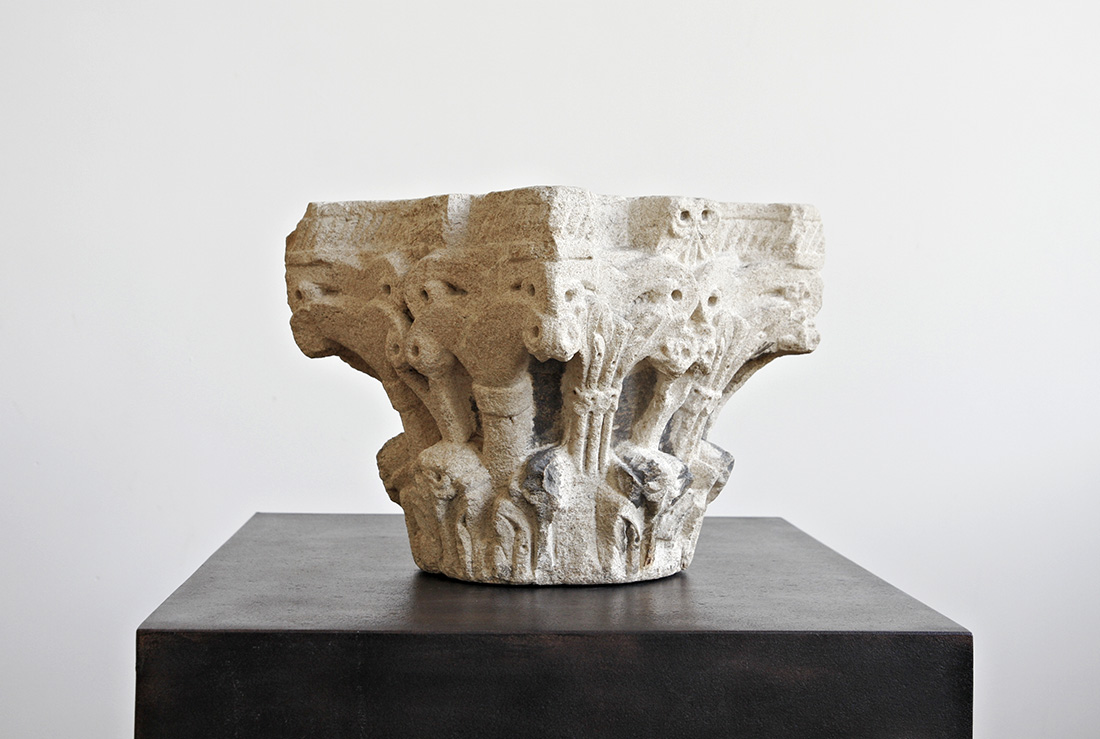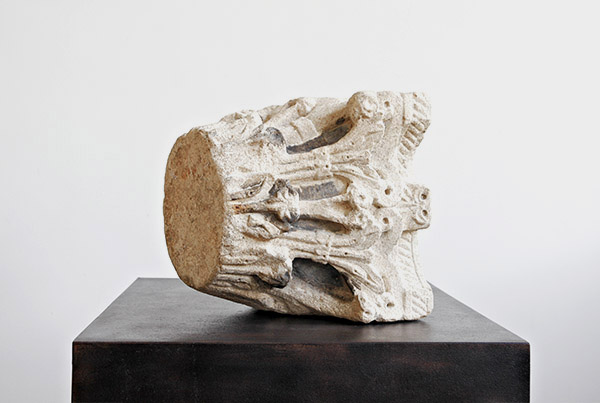CAPITAL CATALONIA
ca. 1150-1200

During the Romanesque period , ca. 1000-1300, capitals followed Roman examples, still to be seen in many antique structures. Old capitals were highly prized as antiques, collected and reused in romanesque cloisters and churches. New is the appearance of little creatures, humans and animals, hidden in the stylised acanthus foliage. Sometimes moving scenes from daily- or biblical life appear next to grotesque fantasy figures, referring to good and evil. The stone used for sculpting the capital (granite or limestone) is to some extent determinative for the stonemasons possibilities and result.
This capital with a complex Romanesque variation of the Roman Corinthian capital, is sculpted with palmet and leaf decoration. Notable is the absence of a moulded base, a characteristic of this type of romanesque ‘acanthus’ capitals. The 12th century sculptor followed the antique Roman examples. A moulded ring was part of the column that once supported this capital.
literature: Jean-René Gaborit, La Sculpture Romane, blz. 182, Paris, 2010
Comparable capitals: Santa Maria de Besalú, Catalonia.



CAPITAL CATALONIA
- ca. 1150-1200
- Spain, Catalonia
- Limestone